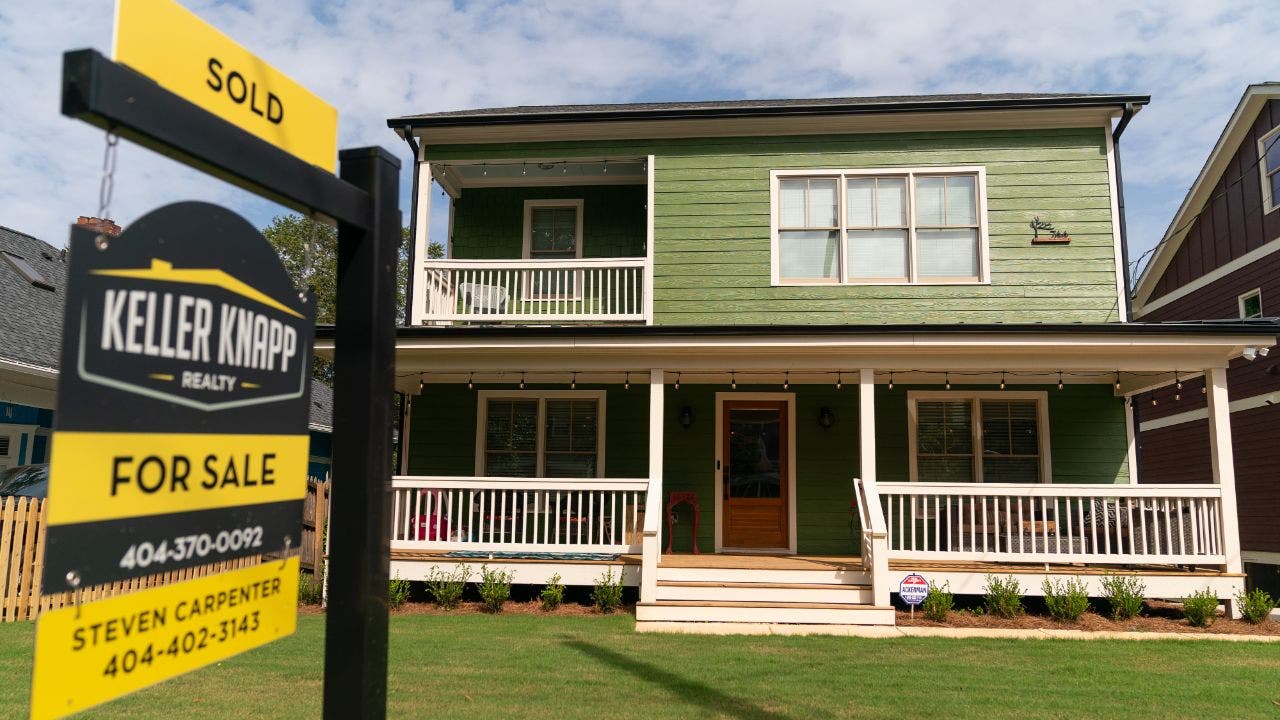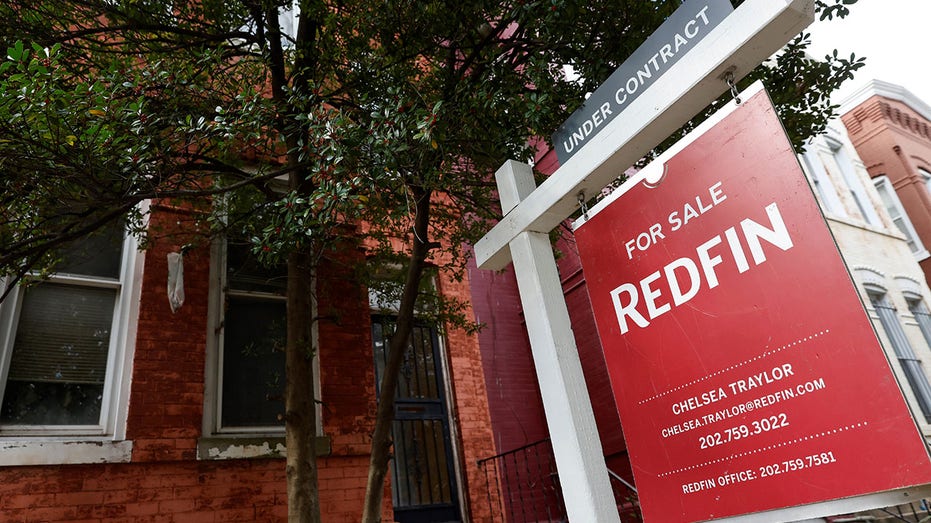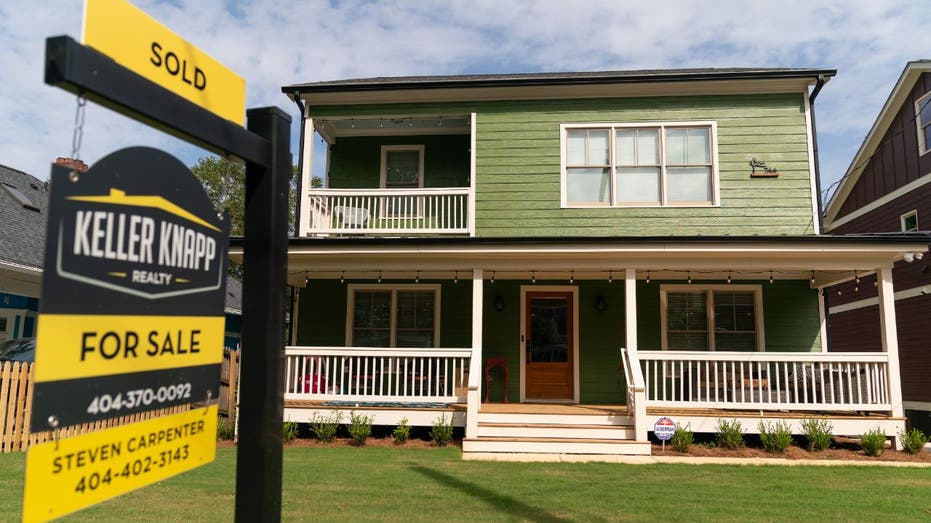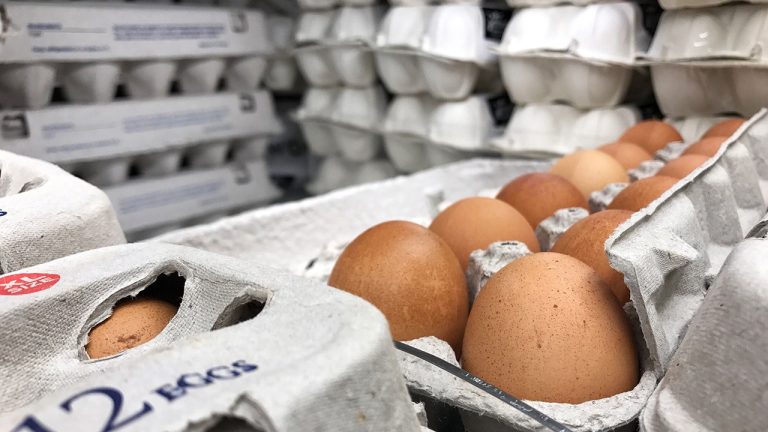
Redfin CEO Glenn Kelman discusses some ‘promising’ housing market trends on ‘Cavuto: Coast to Coast.’
Mortgage rates are on the rise again, jumping this week and approaching 7% as economists warn rates will likely remain elevated for longer than previously expected.
Freddie Mac’s latest Primary Mortgage Market Survey released Thursday showed that the average rate on the benchmark 30-year fixed mortgage rose to 6.87% this week from 6.74% last week. The average rate on a 30-year loan was 6.42% a year ago.
The average rate on the 15-year fixed mortgage also climbed to 6.21% after coming in last week at 6.16%. One year ago, the rate on the 15-year fixed note averaged 5.68%.

Photo taken on Oct. 19, 2022 shows a house for sale in Washington, D.C. (Ting Shen/Xinhua via Getty Images / Getty Images)
MORTGAGE RATES TO STAY ABOVE 6% THROUGH 2025, FANNIE MAE SAYS
The increases are a reversal from the past few weeks, when rates ticked down slightly. However, multiple industry economists have warned over the past several days that mortgage rates will likely remain high for the foreseeable future, further dampening the stalled housing market as buyers and sellers hold out for a more significant drop amid an affordability crisis.
Sam Khater, Freddie Mac’s chief economist, said in a statement last week that “[I]n this environment, there is a good possibility that rates will stay higher for a longer period of time.”
FED LEAVES RATES UNCHANGED, SAYS THREE CUTS STILL PLANNED
Earlier this week, Fannie Mae lifted its forecast for mortgage rates from just a month ago, saying it expects the 30-year fixed to remain above 6% for the next two years.
Meanwhile, home prices remain sky-high amid an ongoing shortage of inventory of homes for buyers to choose from.

A sign outside a home for sale in Atlanta on Sept. 6, 2023. (Elijah Nouvelage/Bloomberg via Getty Images / Getty Images)
“Some existing homeowners are likely to be hesitant to list their home for sale in today’s high-rate environment which will limit existing home supply,” said Realtor.com senior economic research analyst Hannah Jones. “However, new home supply is looking promising as homebuilders cranked up activity in February.”
Jones noted that housing starts climbed 5.9% year over year and home completions were nearly 10% higher annually last month.
GET FOX BUSINESS ON THE GO BY CLICKING HERE
She added, “Overall, for-sale inventory has shown progress on an annual basis, but remains close to 40% below pre-pandemic levels.”







